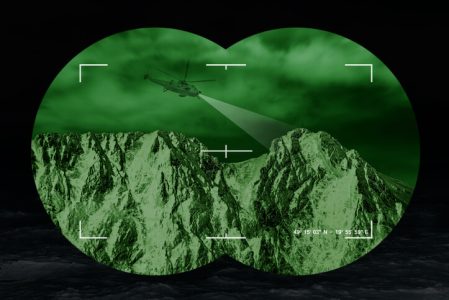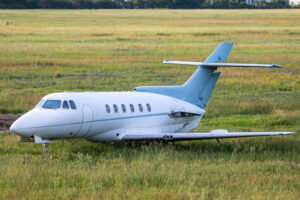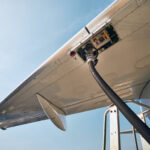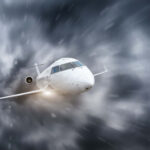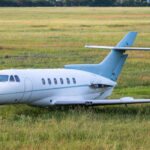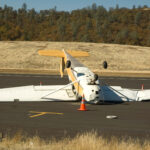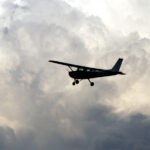Is Helicopter Flight Training with NVGs
Helicopter flight training equips pilots for a wide range of challenging missions, and one of the most vital tools in nighttime operations is the night vision goggle (NVG). Originally developed for military use, NVGs have found a permanent place in civilian operations, especially in air medical services, law enforcement, and search and rescue. While they can dramatically enhance nighttime visibility and improve mission success, they also come with limitations and risks that pilots must be trained to manage effectively.
How it works
Night vision goggles amplify ambient light—like moonlight or starlight—to create a green-hued image of the outside world. They operate by collecting available light through an objective lens, intensifying it through a photocathode tube, and projecting it onto a phosphor screen for the user to see. While incredibly useful, they don’t work in complete darkness and can cause depth perception issues, reduced peripheral vision, and eye fatigue over extended periods. NVGs are widely used in military helicopter operations, but are also common in air ambulance missions, particularly for nighttime scene calls in remote or rugged terrain where terrain hazards can’t be illuminated by city lights.
Benefits of Night Vision Goggles in Helicopter Operations:
- Enhanced visibility in low-light or no-light environments
- Increased safety during landing zone identification and terrain avoidance
- Support for critical missions like medevac, disaster relief, and tactical operations
- Reduced risk of CFIT during night ops
Pilot Training
But NVGs aren’t just a plug-and-play tool—they require focused helicopter flight training to use safely. NVG training typically includes classroom instruction on system components, visual illusions, and human factors, followed by hands-on simulator and in-flight training in night environments. Pilots must learn how to adjust to the “NVG scan,” manage cockpit lighting to avoid glare, and maintain situational awareness despite the device’s limitations. FAA Part 135 operations using NVGs require pilots to meet specific NVG currency and proficiency standards. Many programs also require a dedicated NVG instructor to evaluate readiness before operational deployment.
Potential Hazards
Recent events have brought a cautionary spotlight to NVG use. In January 2025, a U.S. Army Black Hawk helicopter on NVGs collided with a regional jet at Washington Reagan National Airport, killing all aboard the helicopter. Investigators are exploring whether the limited field of view and tunnel vision caused by NVGs may have prevented the Army pilots from seeing the aircraft on short final. While NVGs offer enormous benefits, they also carry real risks if pilots become overly dependent on them or fail to maintain full situational awareness.
NVG Limitations Pilots Must Understand:
- Tunnel vision reduces situational awareness
- No color perception and limited depth perception
- Bright lights can degrade performance or cause momentary blindness
- Increased fatigue from eye strain or poor fit
- Inability to see through glass in some aircraft if not properly equipped
Conclusion
Night vision goggles have become an essential part of modern helicopter operations, but they are only as effective as the training behind them. By integrating NVG-specific modules into helicopter flight training, pilots can not only gain the benefits of enhanced night operations—but also build the judgment needed to use this powerful tool wisely. As technology evolves, the key will always be the same: train like your life depends on it—because it just might.

